DIVING-PAM-II
Version:
Underwater Fluorometer with Miniature Spectrometer
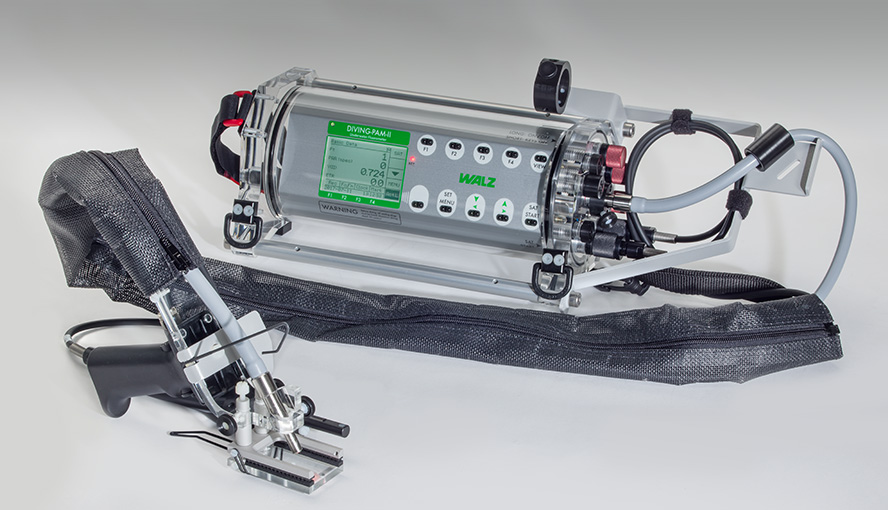
DIVING-PAM-II and Universal Sample Holder DIVING-II-USH.
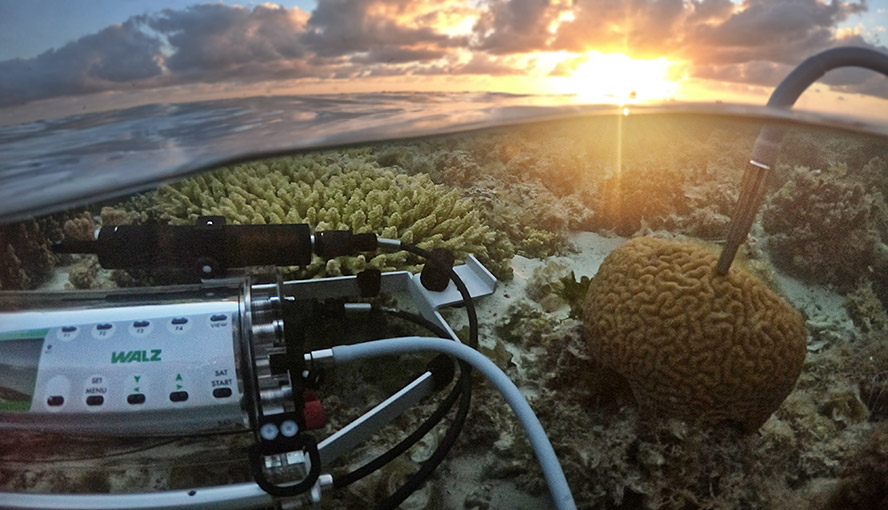
DIVING-PAM-II - Underwater Fluorometer with Miniature Spectrometer
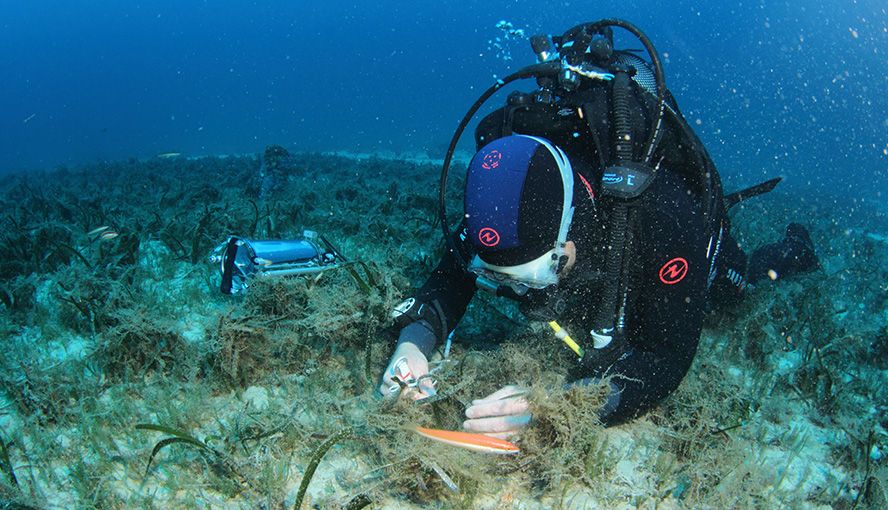
Scientific dive to study aquatic photosynthesis. By courtesy of Arnaud Abadie.
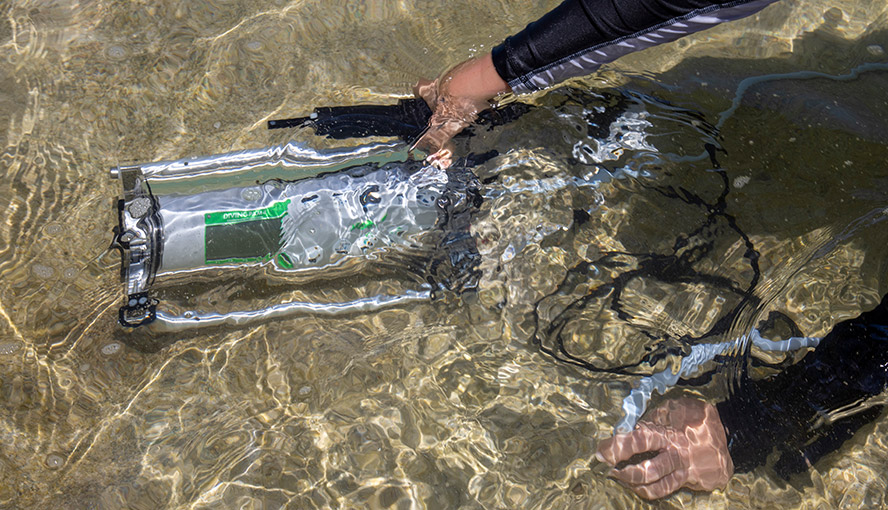
Measuring photosynthesis in beach rock biofilm, Heron Island, GBR, Australia. Photograph courtesy of Erik Trampe, Department of Biology, University of Copenhagen.
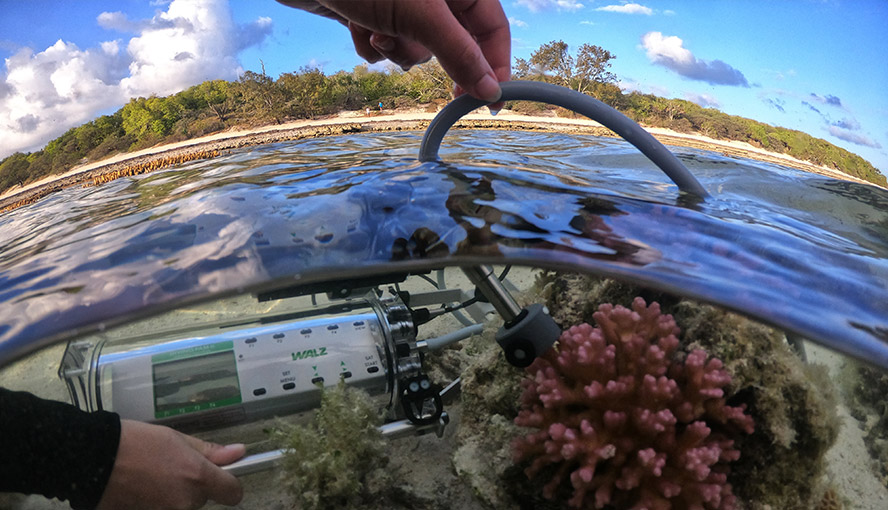
Measuring photosynthesis in the coral Pocillopora damicornis, Heron Island, GBR, Australia. Photograph courtesy of Erik Trampe, Department of Biology, University of Copenhagen.
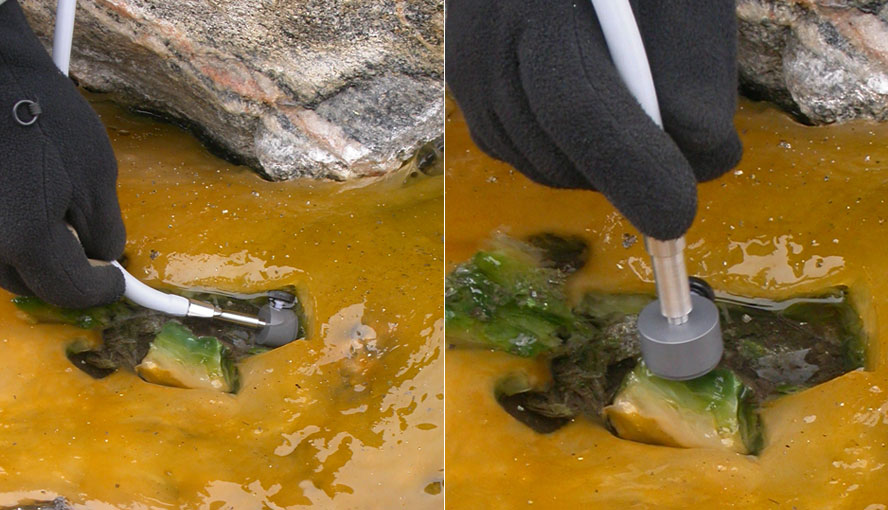
Photosynthesis examined in hot springs of Greenland. By courtesy of Prof. Michael Kühl.
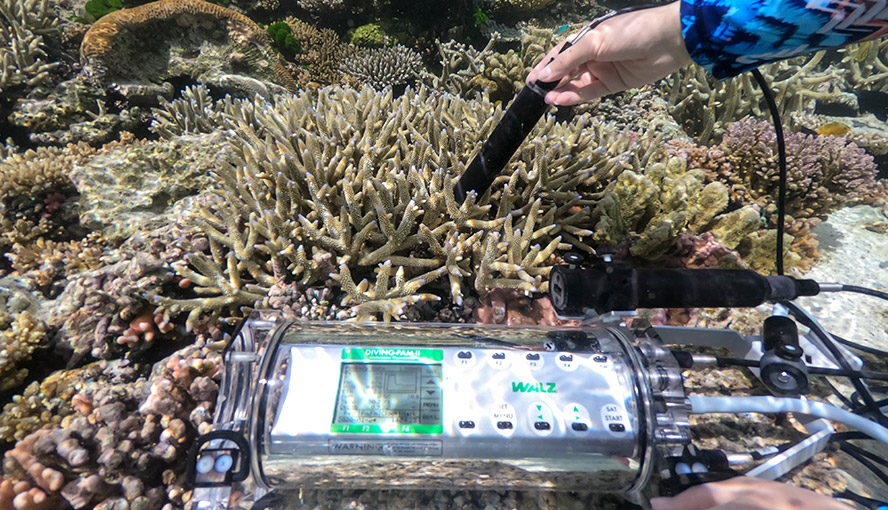
Underwater Oxygen Sensor DIVING-PAM-II/O2 employed in coral studies near Heron Island Research Station, The University of Queensland. Photograph courtesy of Erik Trampe.
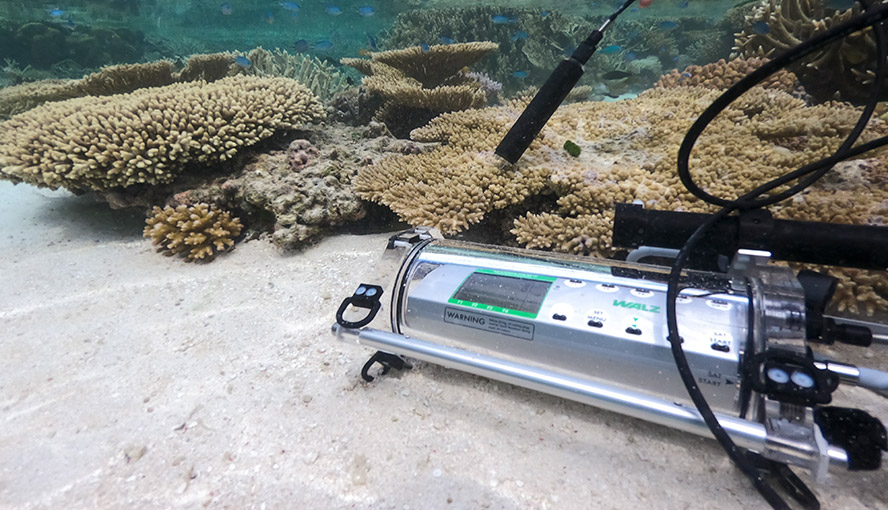
Underwater Oxygen Sensor DIVING-PAM-II/O2 employed in coral studies near Heron Island Research Station, The University of Queensland. Photograph courtesy of Erik Trampe.
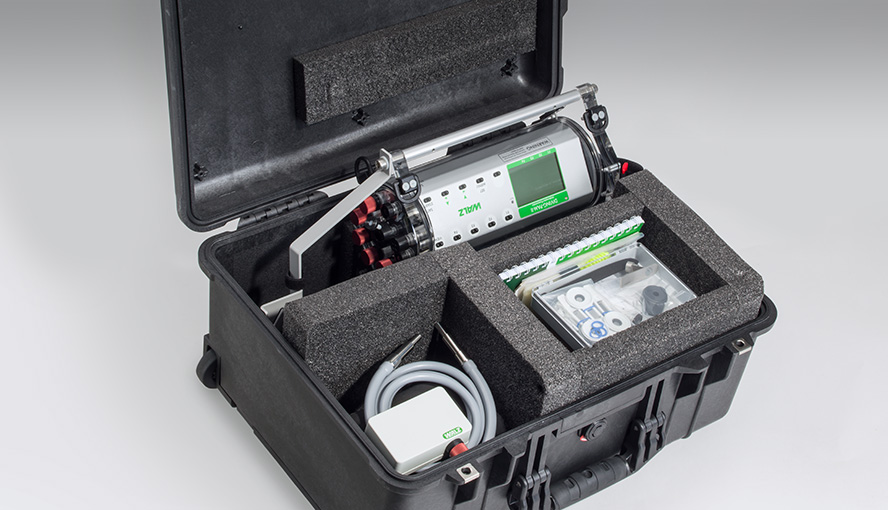
Transport case DIVING-PAM-II/T.
The launch of the DIVING-PAM underwater fluorometer started the era of PAM fluorescence analysis of photosynthetic organisms in their natural habitat. The second-generation underwater fluorometer, the DIVING-PAM-II, extents this era with the latest technology.
The DIVING-PAM-II exclusively uses LEDs as internal light sources, which permits exact timing of switching processes, and prevents overheating by continuous illumination. A built-in PAR sensor continuously records the intensity of internal light. An energy-efficient B/W screen shows data and settings numerically and graphically.
The DIVING-PAM-II system includes a Miniature Spectrometer MINI-SPEC to measures spectra of PAR, which vary significantly with water depth. The total external PAR is automatically calculated. The spectrometer also permits spectral analyses of the sample’s fluorescence emission and reflectance.
In situ investigations of cyanobacterial photosynthesis using a Walz DIVING-PAM fluorometer has been released. The video was recorded during a research campaign in Greenland (2013) which was targeted to photosynthesis of algae on surfaces of submarine mineral formations (ikaide columns). This research campaign was sponsored in part by Walz.
General Features DIVING-PAM-II
The cylinder-shaped DIVING-PAM-II fluorometer is approved for water depth down to 50 m. Advanced sensors record pressure and temperature. A high power LED is used for actinic light and saturation pulses. A far red LED for specific PS I excitation is installed. A proven fiberoptics connects sample and DIVING-PAM-II. All relevant parameters of saturation pulse analysis are automatically calculated.
A transflective screen displays saturation pulse and kinetic data. Only 10 infrared reflection switches control data display and settings. A Windows computer can also operate the DIVING-PAM-II. Underwater cables are available for long-term experiments controlled by a Windows computer. Wireless LAN allows convenient data download.
The battery capacity lasts for more than 1,300, the internal flash memory for more than 27,000 PS II yield measurements. The system includes, among other things, a 5 m underwater cable, the WinControl-3 software and a rugged outdoor transport case. In dry environment, accessories of the MINI-PAM-II fluorometer can be operated by the DIVING-PAM-II.